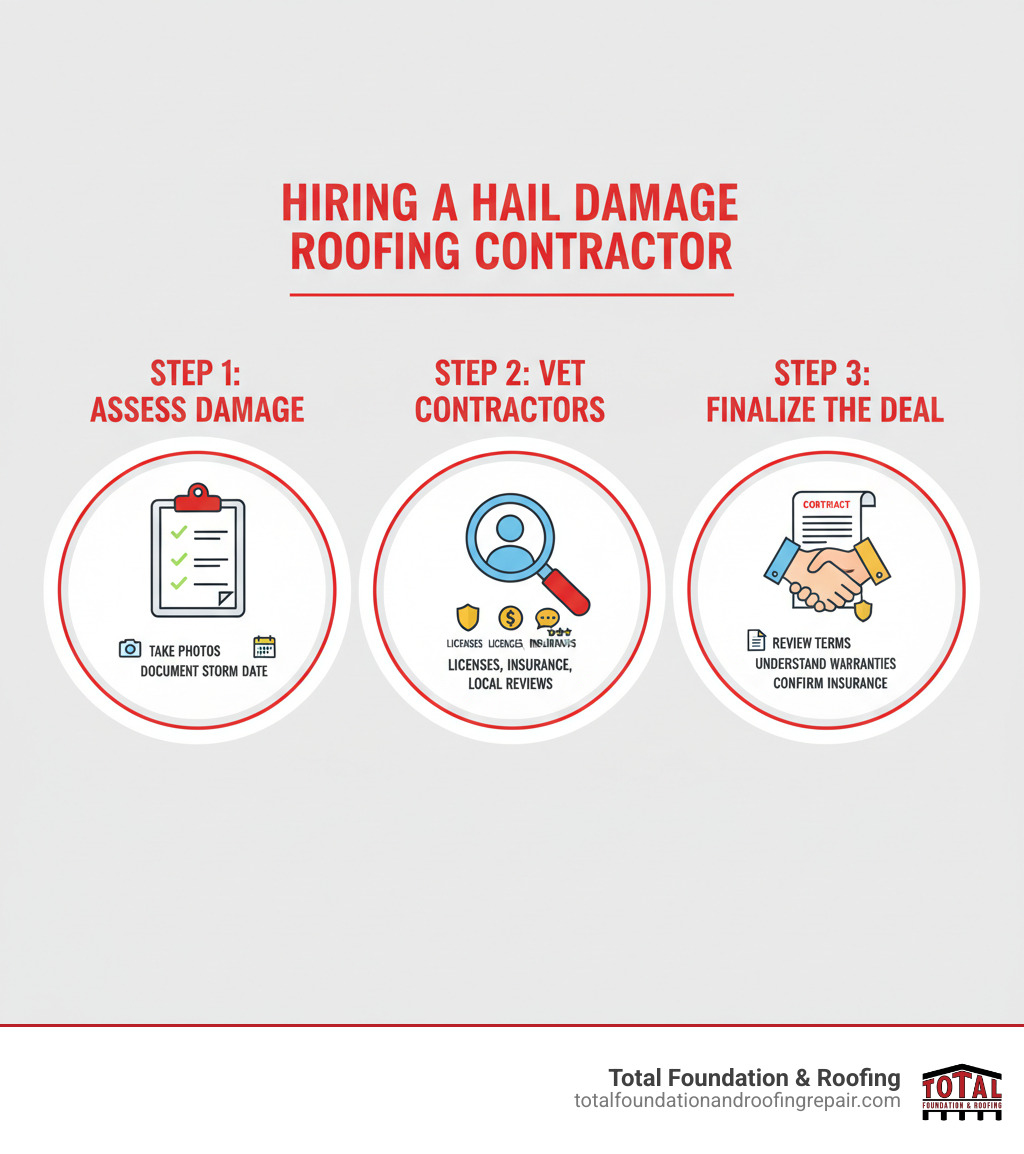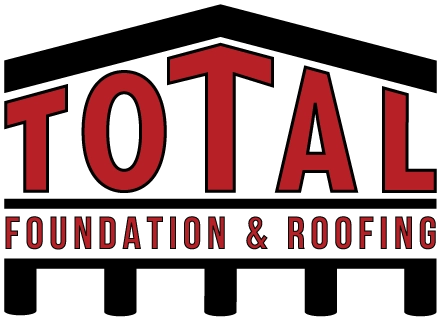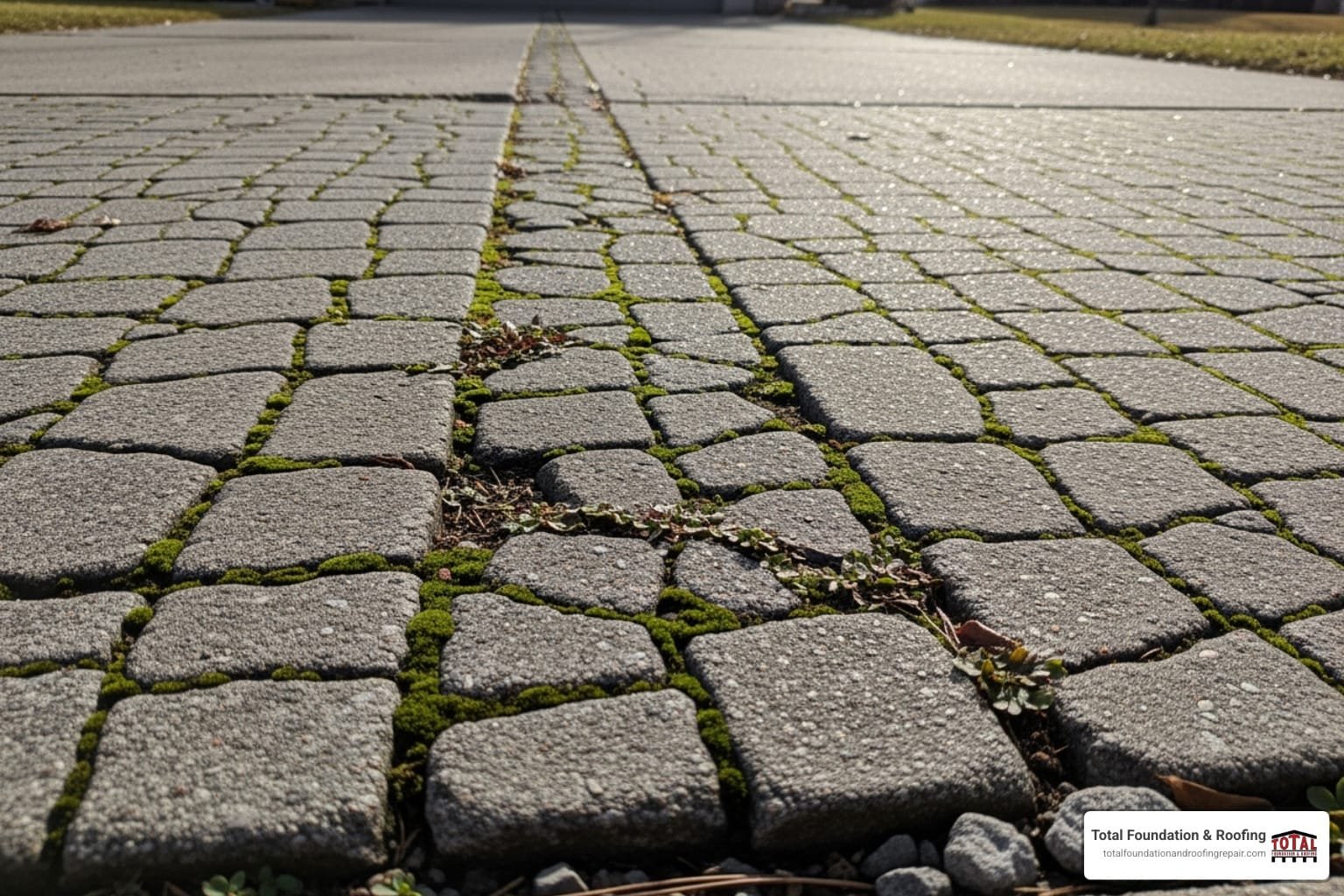Table of Contents
ToggleThe Aftermath of the Storm: Why Choosing the Right Contractor Matters
Finding trustworthy hail damage roofing contractors after a storm can feel overwhelming, especially when door-knockers flood your neighborhood. When the storm passes, the real stress begins: navigating insurance claims and finding a Texas Hill Country roofing and foundation expert you can trust. Unfortunately, storms also bring “storm chasers”—out-of-state contractors who pressure homeowners and disappear before warranty issues surface. This guide will show you how to choose a reputable contractor and avoid scams.
Quick Guide to Hiring Reputable Hail Damage Roofing Contractors:
- Verify Local Presence: Confirm they have a physical address in your area.
- Check Credentials: Ask for proof of insurance, licensing, and Better Business Bureau ratings.
- Read Reviews: Look for consistent positive feedback on Google and other platforms.
- Get Multiple Quotes: Compare at least three detailed estimates.
- Review Contracts Carefully: Never sign anything on the spot; understand all terms.
- Trust Your Gut: If a contractor’s pitch feels off, walk away.
Hail as small as a dime can cause significant roof damage that isn’t immediately visible. Left unaddressed, this damage allows water to seep through shingles, damaging insulation and staining walls long before you notice a leak. You can find reliable hail damage roofing contractors who will stand behind their work, but it requires doing your homework.
I’m Daniel Sowell, owner of Total Foundation & Roofing Repair, LLC. For over 18 years, I’ve helped Texas Hill Country homeowners with storm damage repairs in Kerrville and the surrounding areas. My team and I work with insurance companies to restore homes with quality repairs that last.

Find more about hail damage roofing contractors:
How to Find Reputable Hail Damage Roofing Contractors and Avoid Scams
When a hailstorm hits, finding the right hail damage roofing contractors doesn’t have to be a guessing game. A methodical approach protects your home and wallet. Let’s walk through the three essential steps to hiring a contractor you can trust.
Step 1: Assess the Damage and Document Everything
After a hailstorm, your first step should be to assess and document the damage. This is the single most important thing you can do to protect yourself before meeting with a contractor or insurance adjuster.

Hail damage isn’t always obvious from the ground. Even small hailstones can cause significant issues that appear later as water damage. From a safe location, look for:
- Dented or Cracked Shingles: Hail creates bruises on asphalt shingles, compromising their protective layer.
- Granule Loss: Look for coarse, sand-like granules in your gutters. These protect your shingles from UV aging.
- Dented Gutters and Downspouts: Metal surfaces show hail impacts clearly. If your gutters are dented, your roof likely is too.
- Damaged Siding, Fixtures, and AC Units: Hail doesn’t discriminate, so check all exterior surfaces.
- Water Stains: The most serious sign is water stains in your attic or on ceilings. If you see these, you already have an active leak and need immediate professional storm damage repair.
Time is not your friend. An attic water leak can cause thousands in damage if left unaddressed. Furthermore, most insurance policies have a limited window to file a claim. Delaying could mean you pay for everything yourself or even void your roof’s warranty.
Proper documentation is crucial for your insurance claim.
- Take photos and videos: Get close-ups of dents and wider shots of your roof, gutters, and siding.
- Check timestamps: Ensure your photos are timestamped to prove when the damage occurred.
- Note the storm details: Write down the exact date and time the storm hit.
According to the Insurance Information Institute, wind and hail damage are a leading cause of homeowners insurance claims. Thorough documentation is key to a successful claim.
Warning: Do not attempt DIY hail damage repairs. Walking on a potentially unstable roof is dangerous. You will also likely void your manufacturer’s warranty and your insurance coverage. Insurers can deny claims if they find faulty DIY work.
Step 2: Spotting Scams and Vetting Legitimate Hail Damage Roofing Contractors
After a storm, contractors will start knocking on doors. Some are local professionals, but many are “storm chasers”—out-of-state operators who perform shoddy work and disappear. Here’s how to tell them apart:
| Feature | Local Pro | Storm Chaser |
|---|---|---|
| Local Office | Established physical address in the Texas Hill Country | No permanent office; operates from a vehicle |
| Licensing/Insurance | Properly licensed and insured for Texas; provides proof | Lacks proper credentials or refuses to show proof |
| Warranty | Offers comprehensive workmanship warranties and honors them | Offers vague warranties that are worthless once they leave town |
| References | Provides local references from your community | Few or no verifiable local references |
| Reputation | Strong local reputation and positive online reviews | Little to no local reputation; suspicious reviews |
| Payment Terms | Reasonable deposit with final payment upon completion | Demands large upfront payments |
| Sales Tactics | Professional and informative; allows time for decisions | High-pressure; creates false urgency to sign immediately |
Storm chaser red flags are consistent. Be wary of anyone demanding a large upfront payment, using high-pressure sales tactics, or promising to “cover your deductible,” which is often illegal. Unmarked trucks with out-of-state license plates are another major warning sign.
Credentials and a local presence prove accountability. A reputable hail damage roofing contractor must be licensed and insured to work in Texas. Ask for their license number and a certificate of insurance, then call the insurer to verify it’s current. Look for certifications from manufacturers like GAF or Owens Corning, which can qualify you for better warranties. A strong rating with the Better Business Bureau (BBB) also indicates a commitment to customer service.
A true local roofer has a physical office and a long-standing reputation in communities like Kerrville. They understand local building codes and weather patterns. At Total Foundation & Roofing, our reputation is built on years of service in the Texas Hill Country. We’re not going anywhere, so we’ll be here to honor our warranties.
Use online reviews for digital detective work. Check Google Reviews for a high star rating and read both positive and negative feedback to see how the contractor responds to criticism. Consistent complaints about poor workmanship or communication are a clear sign to look elsewhere.
Step 3: Navigating Contracts and Insurance with Hail Damage Roofing Contractors
You’ve vetted your contractors and are ready to decide. This is where a great contractor acts as your advocate.

Your contractor works for you; the adjuster works for the insurance company. A reputable contractor provides a thorough, accurate estimate and negotiates with the insurer on your behalf to ensure all necessary repairs are covered. It’s normal for a contractor’s initial estimate to be higher than the insurer’s. An experienced contractor will justify the difference with detailed documentation and supplements to cover all damage.
Never sign a contract on the spot. A professional contract should always include:
- Detailed Scope of Work: A list of every task, from tear-off to cleanup.
- Specific Materials: The exact brand and type of shingles and other materials.
- Project Timeline: Estimated start and completion dates.
- Payment Schedule: A reasonable deposit with final payment due upon satisfactory completion.
- Proof of Insurance and Licensing: Verifiable license and policy numbers.
- Cleanup Clause: A promise to remove all debris and nails.
Understand your warranties. A workmanship warranty covers installation quality, while a manufacturer warranty covers the materials. Reputable contractors offer substantial workmanship warranties in writing. If damage is extensive, a complete home roof replacement is often a better long-term solution, as it provides full warranty coverage.
Review your insurance policy annually. Understand if you have Replacement Cost Value (RCV) or Actual Cash Value (ACV) coverage, as ACV pays significantly less. Your deductible should be your only out-of-pocket expense. Be wary of any contractor who offers to “waive” it, as this is a sign of insurance fraud.
Getting a detailed free estimate for your roof repair is the best way to start the process and ensure everyone is working from the same information.
Your Next Steps to a Secure Roof
You now have the knowledge to find trustworthy hail damage roofing contractors and make confident decisions. Here’s a quick recap:
- Assess and Document: Immediately after a storm, take photos and videos of all damage. This is the foundation of your insurance claim.
- Vet Contractors Thoroughly: Prioritize a true local roofer with a physical address, proper licensing, insurance, and positive reviews on sites like the Better Business Bureau.
- Review Contracts Carefully: Never sign on the spot. Ensure the contract details the scope of work, materials, timeline, and payment schedule.
- Trust Your Gut: If a contractor seems unprofessional or uses high-pressure tactics, walk away.
Hail damage doesn’t get better with time. A small, unseen leak can lead to mold, weakened insulation, and structural issues. The longer you wait, the more expensive the fix becomes.
At Total Foundation & Roofing, we’ve spent over 18 years building trust with our Texas Hill Country neighbors. We provide certified, high-quality workmanship designed for our region’s unique weather. We’ll be here to honor every warranty we make.
Don’t gamble with your home’s protection. If you suspect hail damage, contact us today for a comprehensive inspection and reliable storm damage repair. Let our experts help you restore your peace of mind.




